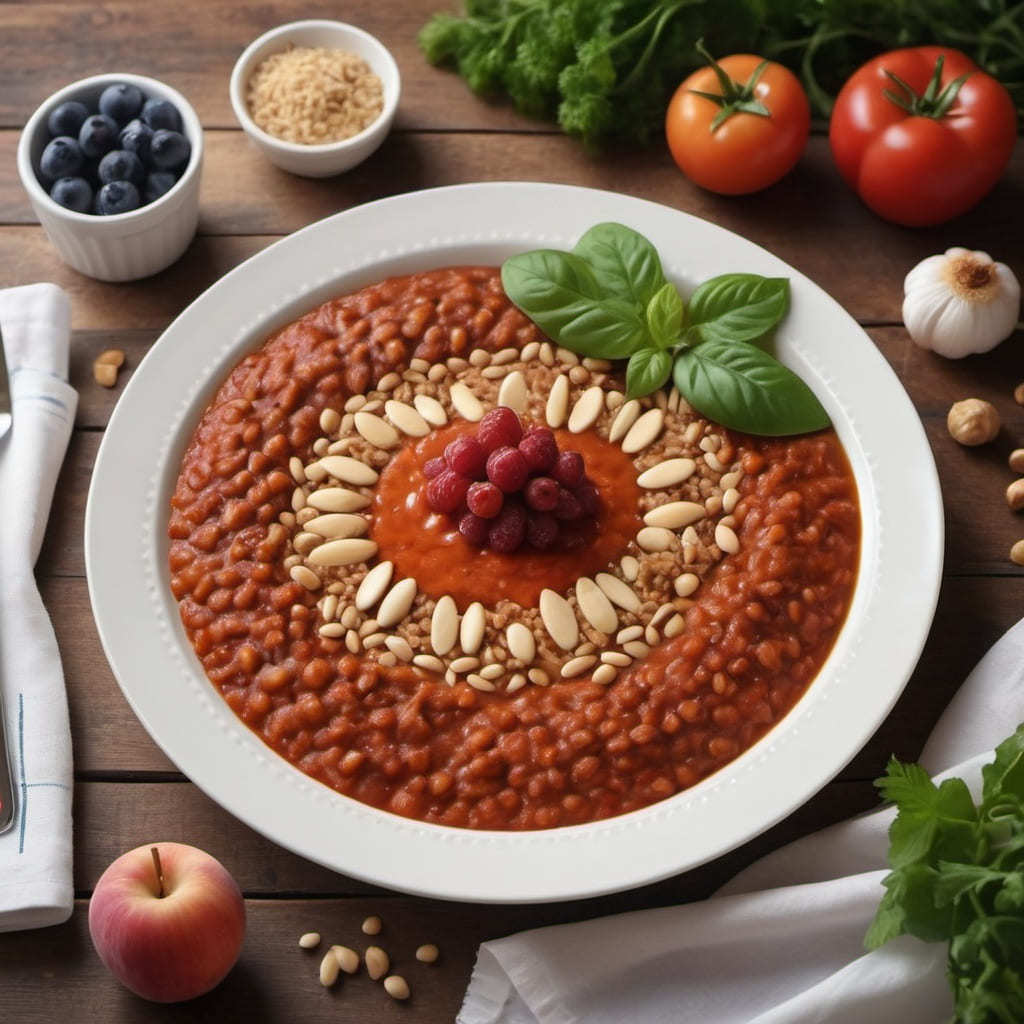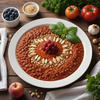

Busy professors often find themselves juggling numerous responsibilities, from teaching and research to administrative duties. In the midst of such demanding schedules, it's easy for self-care to take a backseat. However, maintaining proper nutrition is essential for sustaining energy levels and cognitive function throughout the day. This article explores a variety of nourishing recipes and meal prep strategies tailored to the unique needs of academics.
Quick and Easy Breakfast Ideas
The morning rush leaves little time for elaborate meal preparation. Yet, starting the day with a nutritious breakfast is crucial for fueling both body and mind. Simple options like overnight oats, yogurt parfaits, and smoothies provide a balance of carbohydrates, protein, and healthy fats in mere minutes.
Simple Lunch Recipes
Midday meals should be satisfying and energizing without causing a post-lunch slump. Recipes like quinoa salad bowls, veggie wraps, and hearty soups are ideal for busy professionals seeking nourishment on the go. With minimal prep required, these dishes can be enjoyed at the office or during a quick break between classes.
Effortless Dinner Recipes
After a long day, the last thing professors want is to spend hours in the kitchen. Quick and easy dinner options like one-pot pasta dishes, stir-fries, and sheet pan meals offer a convenient solution. These recipes require minimal cleanup, allowing for more time to unwind and relax in the evening.
Snack Time Solutions
Combatting mid-afternoon cravings is essential for maintaining productivity. Instead of reaching for sugary snacks or caffeine, opt for nutritious alternatives like mixed nuts, fresh fruit, or whole grain crackers with hummus. These snacks provide sustained energy without the dreaded sugar crash.
Meal Prep Tips for Busy Professionals
Efficient meal planning can save both time and money in the long run. Dedicate a few hours each week to prepping ingredients and cooking meals in advance. Invest in quality storage containers to keep meals fresh throughout the week, and don't be afraid to experiment with new recipes and flavors.
Importance of Balanced Nutrition
A well-rounded diet is essential for optimal health and performance. Ensure each meal includes a balance of carbohydrates, protein, healthy fats, and plenty of fruits and vegetables. Experiment with different cuisines and cooking techniques to keep meals interesting and flavorful.
Incorporating Variety and Flavor
Eating should be an enjoyable experience, even for busy professionals. Don't be afraid to get creative in the kitchen and experiment with new ingredients and flavors. Try incorporating international cuisines or seasonal produce to keep meals exciting and satisfying.
Staying Hydrated
Proper hydration is often overlooked but plays a significant role in overall health and well-being. Aim to drink at least eight glasses of water per day, and consider adding flavor with fresh herbs or fruit infusions. Herbal teas and coconut water are also excellent options for staying hydrated throughout the day.
Managing Stress Through Diet
Certain foods can help alleviate stress and promote relaxation. Incorporate stress-busting ingredients like leafy greens, fatty fish, and nuts into your meals. Practice mindful eating by savoring each bite and taking time to appreciate the flavors and textures of your food.
Socializing Over Meals
Mealtime presents an opportunity to connect with colleagues and friends outside of the office. Organize potluck lunches or dinner parties to foster a sense of community and camaraderie. Sharing a meal together can strengthen relationships and provide much-needed support during busy times.
Healthy Eating on a Budget
Eating well doesn't have to break the bank. Shop for seasonal produce, buy in bulk, and take advantage of sales and discounts at your local grocery store. Look for budget-friendly recipes that use affordable ingredients and focus on cooking from scratch whenever Possible.
Resources for Further Learning
For those looking to expand their culinary repertoire, there are countless resources available. Explore cookbooks, websites, and cooking apps for inspiration and guidance. Consider enrolling in a cooking class or attending a nutrition workshop to deepen your understanding of food and cooking techniques.
Conclusion
In the fast-paced world of academia, it's easy to neglect our own well-being in favor of work commitments. However, prioritizing proper nutrition is essential for sustaining energy levels, managing stress, and promoting overall health. By incorporating nourishing meals into our daily routines, we can support our physical and mental well-being while thriving in our professional lives.
FAQs
What are some time-saving cooking techniques for busy professors?
- Batch cooking and meal prepping on weekends can save time during the week. Invest in kitchen appliances like slow cookers and Instant Pots for hassle-free meal preparation.
How can I ensure I'm getting enough nutrients with a hectic schedule?
- Focus on incorporating a variety of fruits, vegetables, whole grains, and lean proteins into your meals. Consider taking a multivitamin to fill in any nutritional gaps.
Are there any meal delivery services tailored to the needs of busy professionals?
- Yes, several meal delivery services offer healthy, pre-prepared meals designed for busy individuals. Look for options that prioritize fresh, organic ingredients and customizable meal plans.
What are some healthy alternatives to traditional office snacks?
- Instead of reaching for sugary snacks or processed foods, opt for nutrient-dense options like fresh fruit, yogurt, nuts, or cut vegetables with hummus.
Can you recommend any easy-to-follow meal prep guides for beginners?
- There are many online resources and cookbooks dedicated to meal prep for beginners. Look for guides that provide step-by-step instructions, shopping lists, and simple recipes tailored to your dietary preferences.

Introduction to Fine Dining at Home
Gone are the days when fine dining was synonymous with expensive restaurants and formal attire. Today, more and more home cooks are embracing the art of fine dining, infusing their meals with elegance and sophistication. But what exactly sets fine dining apart from everyday cooking? It's all about the presentation, ambiance, and quality of ingredients.
Importance of Presentation
One of the hallmarks of fine dining is impeccable presentation. A beautifully plated dish not only tantalizes the taste buds but also pleases the eyes. To achieve stunning presentation, consider the colors, textures, and arrangement of each component on the plate. Pay attention to detail and strive for balance and harmony in every dish.
Creating a Luxurious Ambiance
In addition to exquisite plating, creating a luxurious ambiance can enhance the fine dining experience. Start by setting the mood with soft lighting, using candles or dimmable fixtures to create a warm and inviting atmosphere. Invest in elegant tableware, such as fine china and crystal glassware, to add a touch of sophistication to your table.
Setting the Mood with Lighting
The right lighting can make all the difference in creating a cozy yet upscale ambiance. Opt for soft, diffused lighting to cast a flattering glow over your dining space. Consider using candles or string lights to add a romantic touch to your table setting.
Choosing Elegant Tableware
Upgrade your dining experience by investing in high-quality tableware. Choose dinnerware with intricate designs and delicate patterns to elevate the visual appeal of your table. Pair it with polished silverware and crystal glassware for an added touch of elegance.
Elevating Ingredients: Quality Matters
At the heart of fine dining is the use of premium ingredients. Whether you're preparing a simple salad or a gourmet entrée, sourcing the finest ingredients is essential to achieving exceptional flavor and texture. Look for fresh, seasonal produce and high-quality meats and seafood to elevate your dishes to the next level.
Selecting Fresh and Premium Ingredients
The key to exquisite cuisine lies in the freshness and quality of the ingredients. Visit local farmers' markets or specialty grocers to find the freshest produce and artisanal products. Invest in premium cuts of meat and sustainable seafood to create dishes that are both delicious and memorable .
Exploring Unique Flavors and Textures
Don't be afraid to experiment with unique flavors and textures in your cooking. Incorporate exotic spices, aromatic herbs, and artisanal ingredients to add depth and complexity to your dishes. Mix and match different flavor profiles to create bold and unexpected combinations that will tantalize your taste buds.
Art of Plating: Techniques and Tips
Mastering the art of plating is essential for creating visually stunning dishes. Pay attention to every detail, from the placement of each component to the garnishes used to accentuate flavors. With practice and patience, you can transform even the simplest of dishes into works of art .
Balance and Symmetry
Achieving balance and symmetry on the plate is key to creating visually appealing presentations. Arrange ingredients in a way that creates harmony and coherence, avoiding overcrowding or clutter. Use negative space to draw attention to the focal point of the dish and create a sense of elegance and refinement.
Color Coordination
Consider the color palette of your dish when plating, aiming for a harmonious blend of hues that are visually appealing. Use vibrant vegetables, fresh herbs, and colorful sauces to add pops of color and contrast to the plate. Experiment with different combinations to create stunning visual effects that will captivate your guests.
Garnishing Like a Pro
The final touch to any well-plated dish is the garnish. Choose garnishes that not only enhance the flavor of the dish but also add visual interest and texture. Fresh herbs, edible flowers, and microgreens are excellent choices for adding a touch of elegance and sophistication to your plates.
Culinary Creativity: Fusion and Innovation
Fine dining is all about pushing the boundaries and exploring new culinary horizons. Embrace your creativity in the kitchen by experimenting with fusion cuisine and innovative techniques. Mix traditional recipes with modern twists to create dishes that are both innovative and delicious.
Experimenting with Global Cuisines
Take inspiration from cuisines around the world and incorporate elements of global flavors into your cooking. Whether it's adding Asian spices to a classic French dish or infusing Italian pasta with Middle Eastern influences, the possibilities are endless. Let your imagination run wild and create culinary masterpieces that reflects your unique palate and style.
Infusing Modern Techniques
Stay abreast of the latest culinary trends and techniques to keep your cooking fresh and exciting. Experiment with sous vide, molecular gastronomy, and other modern cooking methods to add a contemporary twist to your dishes. Incorporate techniques such as foams, gels, and emulsions to elevate the presentation and texture of your creations.
Wine and Dine: Pairing Suggestions
No fine dining experience is complete without the perfect wine pairing. Elevate your meal with carefully selected wines that complement and enhance the flavors of your dishes. Whether you're serving seafood, steak, or dessert, there's a wine out there that's perfectly suited to Elevate your dining experience.
Understanding Flavor Profiles
When choosing wines for your meal, consider the flavor profiles of both the food and the wine. Opt for wines that balance and contrast with the flavors of the dish, enhancing its overall taste experience. For example, pair acidic wines with rich, fatty foods to cut through the richness, or opt for sweet wines to complement spicy dishes.
Matching Wines with Courses
Pairing wines with each course of your meal can elevate the dining experience to new heights. Start with light, crisp whites or sparkling wines as an aperitif, then progress to fuller-bodied whites or light reds to accompany appetizers and salads. For the main course , choose robust reds or elegant whites that complement the flavors of the dish. Finally, finish with a sweet dessert wine or fortified wine to round off

Chilies have ignited taste buds and added zest to cuisines worldwide for centuries. From the fiery habanero to the smoky chipotle, the world of chilies is as diverse as it is flavorful. Join us on a spicy journey as we explore the rich tapestry of global chili cultures.
Introduction to Chili Cultures
Chilies are not just ingredients; they are cultural icons. Across continents and civilizations, chilies hold a special place in culinary traditions. They are not merely about heat; they bring complex flavors and nuances to dishes, making them indispensable in kitchens globally. The history of chilies intertwines with the history of human exploration, trade, and gastronomy.
Exploring Chili Varieties
The sheer variety of chilies is staggering. From the mild bell pepper to the scorching Carolina Reaper, each chili variety offers a unique flavor profile and heat intensity. Understanding chili types is crucial for anyone delving into the world of spicy cuisine, whether as a chef , food enthusiast, or adventurous eater.
Origins of Spicy Foods
The origins of spicy foods can be traced back to ancient civilizations. Chilies, along with other spices, played a significant role in trade, cultural exchange, and culinary experimentation. Over time, different regions developed their spicy food traditions, creating a mosaic of flavors and cooking techniques.
Chili Cultures in Asia
Asia is a hotbed of chili cultures. From the pungent spices of India to the fiery Sichuan peppers of China, Asian cuisines are renowned for their bold use of chilies. Spice routes and historical trade routes shaped the culinary landscape of Asia, bringing diverse chili varieties and cooking methods to the forefront.
Chili Cultures in the Americas
The Americas have a rich chili heritage, dating back to indigenous cultures. Native American tribes cultivated and consumed various chili peppers, incorporating them into traditional dishes. The arrival of chilies in Europe via Christopher Columbus sparked a culinary revolution, leading to the global popularity of dishes like chili con carne and mole sauce.
Spice Tourism and Culinary Experiences
For spice enthusiasts, travel offers a tantalizing opportunity to explore chili cultures firsthand. Spice tourism has gained momentum, with travelers seeking authentic spicy food experiences. From street markets in Thailand to chili festivals in Mexico, the world is brimming with spicy culinary delights waiting to be savored.
Health Benefits and Culinary Trends
Beyond their fiery flavor, chilies offer numerous health benefits. They are rich in vitamins, antioxidants, and capsaicin, known for its metabolism-boosting properties. As more people embrace spicy foods, culinary trends like hot sauce tastings, spicy food challenges, and chili -infused desserts are on the rise.
Conclusion
The global chili culture is a legacy to the human love for bold flavors and culinary adventures. From humble beginnings to international acclaim, chilies continue to spice up our lives in delicious ways. Whether you're a chili connoisseur or a curious foodie, exploring the diverse world of chilies is a journey worth savoring.
FAQs
Are all chilies hot? Not all chilies are hot. Some varieties, like bell peppers, are mild and sweet.
What makes chilies spicy? The spiciness of chilies comes from like compounds capsaicin, which stimulates heat receptors in the mouth.
Can spicy foods be healthy? Yes, spicy foods can have health benefits, including boosting metabolism and aiding digestion.
What is the hottest chili in the world? The Carolina Reaper currently holds the title of the world's hottest chili.
How can I build tolerance to spicy foods? Gradually increasing your exposure to spicy foods can help build tolerance over time.

Provence, the picturesque region in southeastern France, is not just a feast for the eyes with its lavender fields and vineyard-dotted landscapes but also a paradise for food enthusiasts. From fragrant herbs to delectable seafood, Provencal cuisine delights the senses with its harmonious flavors .
Introduction to Provence and its Culinary Delights
Nestled between the Alps and the Mediterranean Sea, Provence boasts a rich culinary heritage influenced by its diverse landscapes and cultural tapestry. Food holds a special place in Provencal culture, where meals are celebrated as moments of joy and connection.
Flavorful Ingredients of Provencal Cuisine
At the heart of Provencal cooking lies olive oil, known for its smooth texture and fruity notes that enhance dishes like salads, pastas, and grilled vegetables. Herbs like thyme, rosemary, and oregano add an aromatic essence to Provencal recipes, while fresh produce from local farms ensures a farm-to-table experience.
Signature Dishes of Provence
Ratatouille, a colorful vegetable medley cooked to perfection, showcases the bounty of Provencal gardens. Bouillabaisse, a hearty seafood stew flavored with saffron and herbs, is a must-try for seafood lovers. Tapenade, a savory spread made from olives, capers, and anchovies, adds a burst of flavor to crusty bread.
Wine and Cheese Pairings
Provence is renowned for its rosé wines, which pair beautifully with the region's seafood dishes and light salads. Red wines like Châteauneuf-du-Pape and Bandol complement heartier fare. Local cheeses such as Banon and Pélardon add depth to cheese platters and savory tarts.
Exploring Provencal Markets
Visiting Provencal markets is a sensory delight, with stalls overflowing with vibrant fruits, vegetables, herbs, and spices. These markets offer a glimpse into local life and provide an opportunity to discover unique ingredients like truffles, lavender honey, and artisanal cheeses.
Cooking Classes and Culinary Experiences
Immerse yourself in Provencal cuisine through cooking classes that teach traditional recipes and techniques. Culinary tours and workshops offer insights into local gastronomy, from olive oil tastings to wine pairings with regional specialties.
Dining in Provence: Restaurants and Cafés
Provence boasts a range of dining options, from Michelin-starred restaurants serving innovative dishes to charming cafés offering classic Provencal fare. Whether indulging in a gourmet meal or sipping coffee in a quaint village square, every dining experience in Provence is memorable.
Provence's Sweet Endings
No meal in Provence is complete without a sweet treat infused with lavender, such as lavender-infused crème brûlée or macarons. Nougat and calissons, traditional confections made with almonds and candied fruits, are perfect for satisfying a sweet tooth.
Conclusion
Exploring the harmonious flavors of Provence is a culinary journey filled with vibrant markets, signature dishes, and delightful wine and cheese pairings. From cooking classes to dining experiences, Provencal cuisine invites you to savor each flavor and embrace the essence of this enchanting region.
FAQs About Provencal Cuisine
What makes Provencal cuisine unique? Provencal cuisine is known for its use of fresh ingredients, aromatic herbs, and flavorful olive oil, creating dishes that are both delicious and healthy.
Which Provencal dish is a must-try for seafood enthusiasts? Bouillabaisse, a seafood stew with saffron and herbs, is a quintessential Provencal dish that showcases the region's seafood at its best.
Are there vegetarian options in Provencal cuisine? Yes, dishes like ratatouille, made with a medley of vegetables, and tapenade, a savory olive spread, are popular vegetarian choices in Provence.
What are some famous wines from Provence? Provence is renowned for its rosé wines, including Côtes de Provence and Bandol, which are perfect for pairing with Provencal cuisine.
Where can I experience authentic Provencal dining? You can find authentic Provencal dining experiences in Michelin-starred restaurants, local bistros, and charming cafés throughout the region.
2024年 05月 02日
Being a Foodie in 2024
In 2024, being a foodie goes beyond mere enjoyment of food; it encompasses a lifestyle that celebrates culinary diversity, sustainability, and social connections. This article delves into the evolving landscape of foodie culture, exploring trends, technology's impact, culinary experiences, health considerations , community aspects, and the challenges and opportunities faced by food enthusiasts today.
Introduction to Foodie Culture in 2024
Foodie culture has transformed over the years, moving beyond a love for good food to a deeper appreciation for culinary experiences. Today, being a foodie means embracing a wide range of cuisines, exploring new flavors, and valuing the stories behind each dish. Foodies seek not just sustenance but a journey of taste and discovery.
Trends in Food and Dining
One of the prominent trends shaping foodie culture is the focus on sustainability. Foodies in 2024 are more conscious of their food choices, opting for eco-friendly practices such as reducing food waste and supporting local producers. Moreover, the rise of plant-based options reflects a shift towards healthier and environmentally friendly eating habits.
The culinary scene also witnesses a fusion of flavors from around the world. Foodies delight in exploring global cuisines, blending traditional recipes with modern twists. This diversity in food offerings caters to taste varyings and preferences, making dining experiences more exciting and inclusive.
Technology's Impact on Foodie Culture
Technology plays a significant role in enhancing foodie experiences. Food delivery apps have made it convenient for foodies to indulge in their favorite dishes from the comfort of their homes. Social media platforms, meanwhile, have created a space for food influencers to share their culinary adventures and recommendations, influencing food trends and preferences.
Virtual dining experiences have also gained popularity, allowing foodies to participate in interactive cooking classes or virtual food tours from anywhere in the world. These technological advancements have expanded the horizons of foodie culture, making it more accessible and immersive.
Exploring Local and International Cuisines
Foodies in 2024 have a keen interest in exploring both local delicacies and international cuisines. Traveling for food experiences has become a common pursuit, with food enthusiasts seeking authentic flavors and cultural insights. Additionally, there is a growing emphasis on supporting local eateries and food artisans , contributing to the preservation of culinary traditions and community connections.
Health and Wellness in Foodie Culture
While indulgence is part of the foodie experience, health and wellness considerations are also paramount. Foodies are adopting mindful eating practices, focusing on quality ingredients and balanced nutrition. Wellness-focused dining options, such as organic cafes and health-conscious menus, cater to those seeking a harmonious blend of taste and well-being.
Community and Social Aspect
Food has always been a social connector, and this holds true for foodie culture in 2024. Foodie communities thrive both online and offline, where individuals bond over shared culinary interests and experiences. Food events, workshops, and festivals provide opportunities for foodies to engage, learn, and savor memorable moments together.
Challenges and Opportunities
Despite the enthusiasm surrounding foodie culture, there are challenges to address. Sustainability remains a pressing concern, urging foodies and the food industry to adopt practices that reduce environmental impact. Balancing authenticity with evolving food trends poses another challenge, as foodies navigate between preserving traditional flavors and embracing culinary innovation.
However, these challenges also present opportunities for growth and creativity within the food industry. Innovations in sustainable practices, culinary techniques, and community-driven initiatives pave the way for a more vibrant and responsible foodie culture.
Conclusion
Being a foodie in 2024 is a dynamic and fulfilling experience, characterized by a passion for culinary exploration, sustainability consciousness, social connections, and a commitment to well-being. As foodie culture continues to evolve, embracing diversity, innovation, and mindful consumption will shape the future of gastronomic delights.
5 Unique FAQs
What defines a foodie in 2024? A foodie in 2024 is someone who not only enjoys good food but also values culinary experiences, sustainability, and community connections.
How has technology changed foodie culture? Technology has enhanced foodie culture through food delivery apps, social media influence, and virtual dining experiences, making food exploration more accessible and interactive.
What are the key trends in food and dining for foodies? Sustainable eating, plant-based options, fusion cuisine, and global flavors are key trends shaping foodie preferences in 2024.
What challenges do foodies face today? Foodies face challenges such as sustainability concerns, balancing authenticity with trends, and navigating a vast array of food choices while maintaining health and wellness.
What opportunities exist within foodie culture? Opportunities include innovations in sustainable practices, culinary diversity, community engagement, and the creation of unique dining experiences that cater to diverse tastes and preferences.



